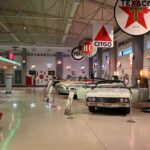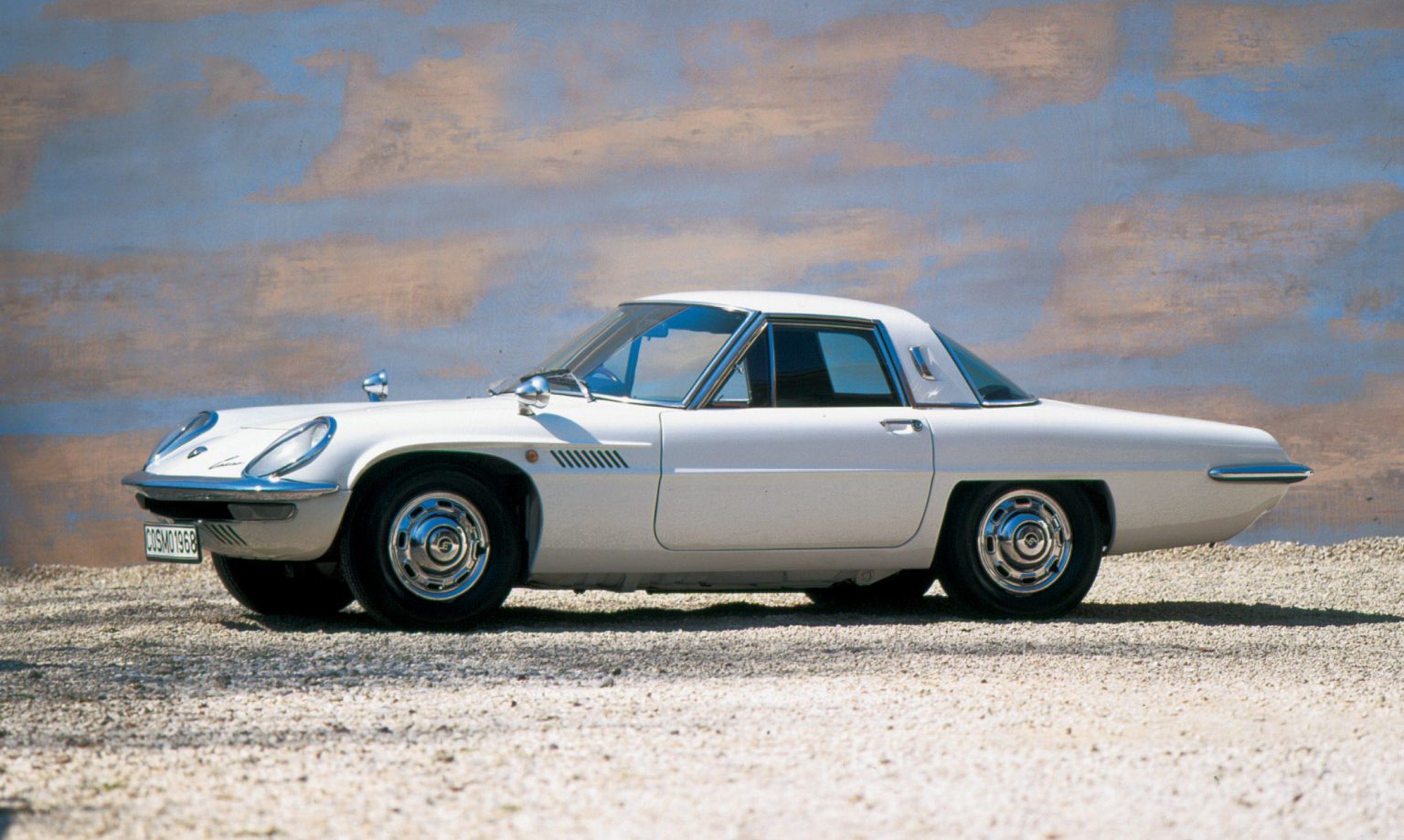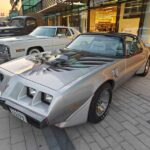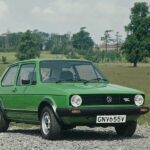
Rotaries, Trikes, Bikes, MX-5 & RX-7. 100 Year Anniversary Of Mazda
From a cork manufacturer in Hiroshima to global carmaker, Mazda celebrates its 100 year anniversary of innovation.
Mazda originally just manufactured cork, until industrialist Jujiro Matsuda took control of Toyo Cork Kogyo Co. Ltd in 1921. He transformed the business, first making machine tools then taking steps into vehicle manufacture.
Mazda’s first vehicle wasn’t a car. Neither was it the 3 wheeled truck. It was a 250cc 2-stroke motorcycle. The prototype was developed in 1929 and in October 1930 one of them won the Chinkon-no Matsuri race.
This first attempt at building a vehicle, beat many imported bikes. Including one from Ariel, which was expected to take the victory. Only 30 of these bikes were produced before Mazda decided to add more wheels.
The first model with Mazda badging was a three-wheeled truck, the 1931 Mazda-Go. This was a popular vehicle and remained in production for some time receiving continual improvements. This sealed Mazda’s position of a commercial vehicle manufacturer.
After a short gap in production due to the Second World War, Mazda resumed production in a matter of months after the bombing of Hiroshima.
The first passenger car didn’t arrive until 1960. The R360 entered in to Japan’s Kei car segment for physically small cars with small engines.
This cute little car had a 356cc V twin engine mounted in the rear. Sold with a four speed manual or a two speed automatic, the little Mazda would reach up to 52mph. And now had positioned Mazda as the Kei car maker of choice.
Rotary Engines
In 1961, Mazda signed a licensing deal with German carmaker NSU to develop and produce the new compact, lightweight Wankel rotary engine. Mazda then did what many thought was impossible. They produced the worlds first rotary engined production model. Many other manufacturers have tried this principle and failed.
Mazda released the Cosmo Sport 110S in 1967. This stunning looking car started a long relationship with the rotary engine that would lead to over 2 million sales of rotary powered vehicles. This engine type also was part of the Le Mans Mazda 787B which won le mans in 1991. Mazda were the first Asian manufacturer to do so and the first to win without a conventional piston engine.
The famous Savanna RX-7 was launched in 1978 and would go on to be a huge success in Europe and America. The first generation was made up until 1985 and had sold over 471,000 examples. The twin rotary engine was available in turbocharged form, taking the engine from the Luce which was already well established.
The RX-7 in Mk1 form could have around 100bhp in North America in normally aspirated form. Whereas the twin turbocharged Mk3 could reach up to 276bhp. Quite a difference.
Mazda does appear to have fitted a rotary to practically everything with many other more sedate looking saloon cars receiving the engine. Cars such as the 1972 RX-3 Savanna. But there’s a reason for this. Here’s 10 rotary powered Mazdas you may not have known about.
In Japan, there were higher levels of taxation on vehicles with engines greater than 1.5l. The lowest taxation class made it appealing for Mazda to manufacture cars with greater levels of performance than a car with a piston engine.
Things have changed in the in the lead up to the 100 year anniversary of Mazda. Different rules across the world, but one thing has remained. The Japanese Kei car.
The Eunos / Miata / MX-5, Worldwide Success
In 1989, Mazda developed what has been the best British two seat sports car. Except it wasn’t British. Taking the typical layout of the small sports car, a four-cylinder engine up front, manual gearbox, open top and rear wheel drive. The thing is they did it better. Better build, reliability and worldwide sales success. Mazda even offered the Mk1, introduced in 1989, in British racing green almost to rub it in.
Kenichi Yamamoto who was head of R&D at Mazda in 1979 asked US motoring journalist Bob Hall what Mazda should build next. “An inexpensive sports car, a simple, bugs-in-the-teeth, wind-in-the-hair, classically British roadster. The idea may not have been from Mazda, but they certainly delivered.
In fact, it was developed at Mazda’s Californian design studio with Bob Hall as part of the team. He even provided the initial sketch.
In the Europe and the UK, you got the MX-5. In Japan it was the Eunos and in America it was called Miata. Sales were impressive winning Mazda a world record in 2000 for the biggest selling sports car ever with 531,890 units. On April 22, 2016, Mazda broke its own record by making the millionth example.
The Mk1 was a classic as soon as it was introduced. Re-introducing a lost market segment, good to drive cars that aren’t expensive. It wasn’t that fast, but that wasn’t the point. It delivered where it mattered.
100 Year Anniversary of Mazda - To The Next 100 Years
Mazda have been doing their own thing and continue to do so. When there is a trend to make ever smaller turbocharged engines, Mazda are going in the opposite direction. This means they know something others do not.
I wonder when asked, what Mazda will be told to make next. The next 100 years will be interesting. I will be watching to see what it is.
Thanks to Mazda for the fantastic 100 year anniversary images, and Happy Birthday.
Simon




